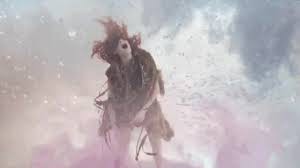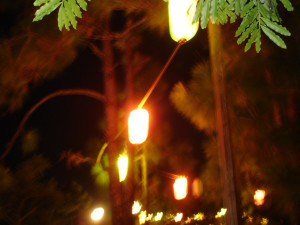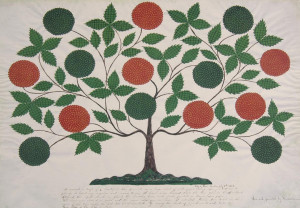While in Japan it is the time of Obon, in Italy it is the time of Ferragosto. Woe to American tourists who travel to Italian cities at this time of year, for chances are good they will find the majority of shops and restaurants closed. Most Italians have headed to the sea for the Ferragosto holiday, a practice that dates back to ancient Rome where this time was known as Feriae Augusti, or “Holidays of the Emperor Augustus.”
The sea is the logical destination as these sultry Dog Days of summer, the hottest part of the year, ruled by Sirius, the dog star, come to a close. There are many schools of thought as to the meaning and the timing of the Dog Days, but if we have to choose one, I’ll subscribe to the version that has them begin each year in early July and end about now, around the 15th of August. For all these Dog Days, Sirius and our sun have been rising together in the morning sky. It was thought in times past that the combined heat of the two made for our hottest days. But in the constant rearrange of the stars and planets, now Sirius begins to emerge from the sun’s bright light and heat to rise independently. The two forces separate.
In the Catholic Church, today is the Feast of the Assumption, marking the day of Mary’s ascent, body and soul, to heaven. Mary, human like us. It is also my grandmother’s birthday. Because she was born on the Assumption, her parents named her Assunta, in honor of the day. Ferragosto and the Feast of the Assumption go hand in hand.
In Lavagna, Italy, yesterday brought a festival that features a cake that stands 21 feet tall! It is the Torta dei Fieschi, a wedding anniversary celebration that dates all the way back to 1230. Tomorrow, on the 16th, it is Il Palio in Siena, the famous horse race that runs through the entire city. This Ferragosto tradition is accompanied by celebrations throughout Siena and, of course, great quantities of food and wine.
In short, if you are in Italy, Ferragosto is not a time to stay home. But this seems not unusual. Some years ago, my mom’s cousin Tina visited from Italy. We had never met her before. She arrived in Miami for a one week stay with three very heavy suitcases, and while she was with us, she changed outfits more than once a day. One of her morning robes had feathers on it. We had never seen such a thing except maybe in glamorous old Hollywood films. Feathers floated into the air in her wake as she floated down the hallway. On Sunday during her visit, we did what we always do: Mom made a big dinner while Dad puttered around the house. Tina asked in Italian, “But what do you do on Sundays here?” Mom answered in the best Italian she could muster. “We cook, we read the paper, we relax.” Tina was not impressed. “In Italy,” she said, “we go out. We go dancing.”
This is what I imagine Italy to be like during Ferragosto, at least if you are in the right place at the right time. If you are in a touristy part of Florence or Rome during Ferragosto, you’re probably in the wrong place at the wrong time. But if you are in Siena, or in Lavagna, or in Napoli (where Tina is from)… well, there’s probably a lot of celebrating and dancing to be done. Get you to the sea or get you to a festa. Summer is coming to a close and it is time to send it out with a bang. Florence + the Machine have got that down pat. The dog days are over, the dog days are done.


